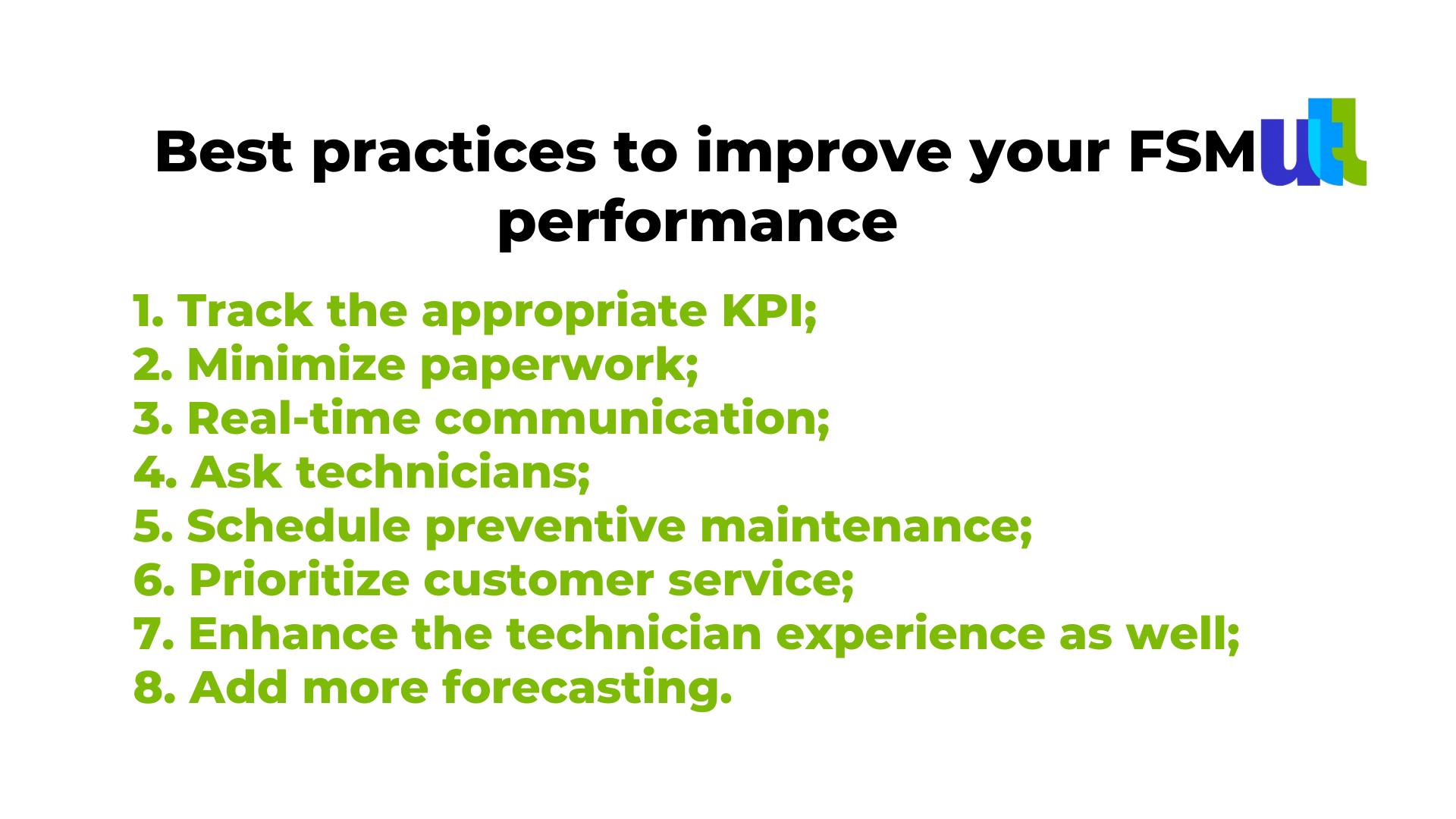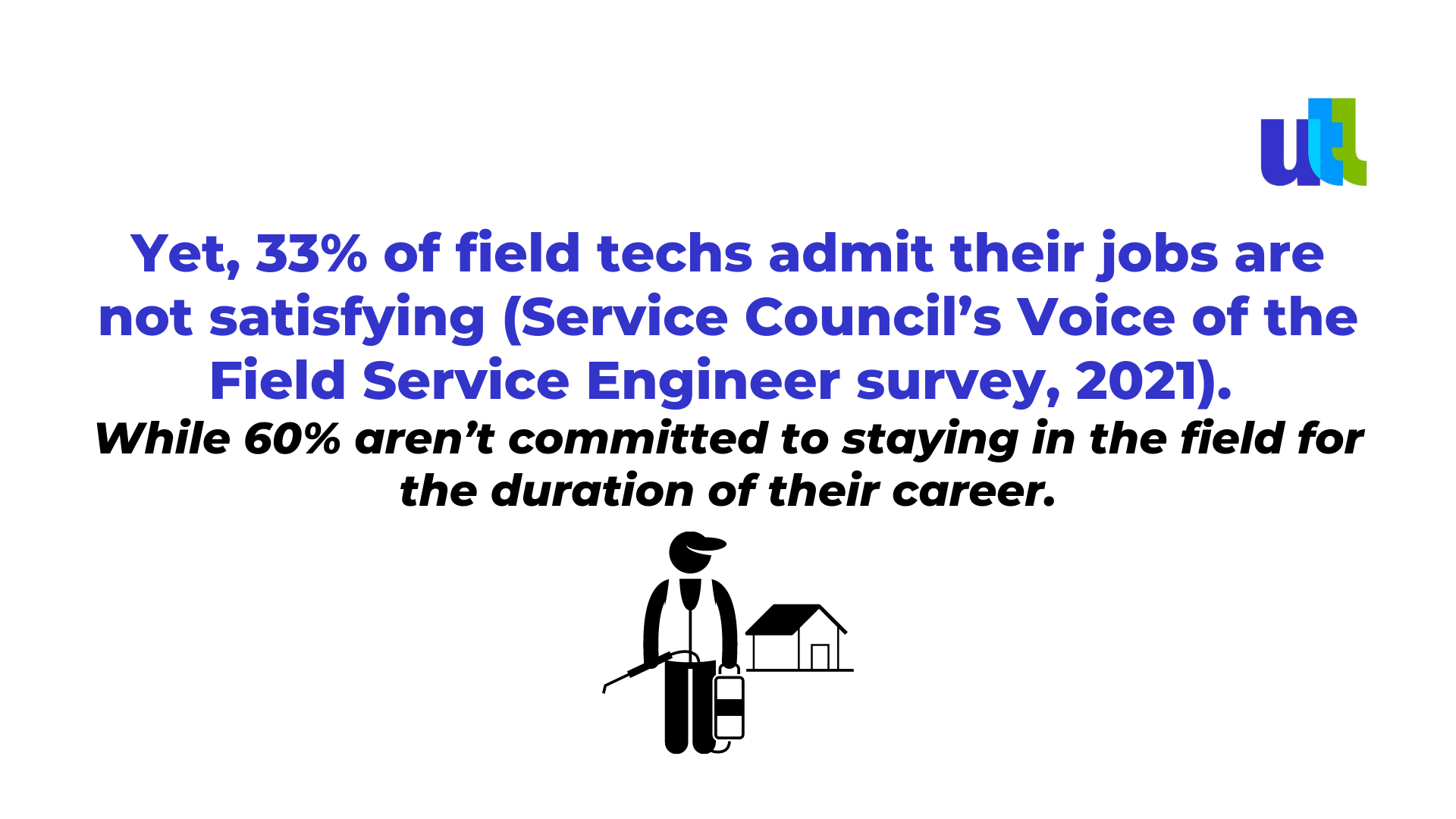While the complex, nuanced factors contributing to success in the field service industry continue to change, there are some key practices that businesses can implement to stay ahead of the curve this year.
Field service management can include a spectrum of responsibilities. It entails the following core elements:
- Scheduling
- Dispatching
- Project installation
- Service contract management
- Customer portal maintenance
- Inventory management
- Product delivery
Across those wide areas, numerous challenges can appear: scheduling conflicts, miscommunications, workforce changes, customer negative feedback, poor first-time fix rates, low asset visibility, and more.
Traditionally, these tasks were performed with manual systems (such as spreadsheets and whiteboards, etc.).
Thanks to the advent of digital technology, however, these responsibilities have since been consolidated into modern software tools.
Streamlining your services not only can make operations more efficient but can also increase your profitability. We asked the field service experts on the Routespro side for their insight into the field service management’s most effective features and solutions. And here are they.
Best practices to improve your FSM performance

1. Track the appropriate KPI
It is not easy to optimize what you can’t measure, so quantifying the performance of your service teams is crucial.
Pay attention to the two top key performance indicators (KPIs) for field service teams are first-time fix rate (FTFR) and mean time to repair (MTTR):
- FTFR – to measure how often technicians manage to solve problems the first time they visit a site. This KPI helps you to understand whether you’re assigning the right technicians and providing them with the right tools. Furthermore, a high FTFR improves customer satisfaction while reducing costs.
- MTTR - to measure how long it takes your team to fix issues. It provides valuable insights into the efficiency of your whole system while solving issues. Noticing a dip in MTTR helps you to dive deeper and diagnose exactly where the issue lies in the chain of service.
2. Minimize paperwork
One of the biggest wastes of technicians’ time is paperwork, while most of the information can be automated. To minimize manual input, we advise automating the communication of such data as customer information, job description, time of departure and arrival, and more if possible.
Integrating a step-by-step digital logic for data management brings maximum efficiency and minimizes errors.
3. Real-time communication
Phone calls and text messages are not the most efficient communication methods for techs in the field. Save their valuable time with real-time updates inside an app that they can access from their phone or tablet.
A good mobile field service management app might offer features like:
- Access to their schedule (that is updated automatically)
- Access to customer profile, location, service history, and warranties
- Offline access to the most important data and service capture
- Comprehensive pricing tools for accurate estimates and automatic invoices
- Automatic calculation of billable work
4. Ask technicians
Your technician is your expert and your result — so ask for their insight and feedback frequently. This should become the base for optimizing your operations.
The best advice here is to automate feedback collection within their job portal.
Successful field service businesses understand the importance of trust and putting the power of communication, information, and even self-scheduling in the hands of their field workers.
5. Schedule preventive maintenance
While much of field service operations involves responding to problems timely and effectively, businesses can improve their service, profitability, and scheduling issues with regular preventative maintenance. It eliminates the frequency of emergencies and keeps you in control of the daily schedule.
It also adds value to customer service and experience by providing an ongoing relationship and reducing worries about equipment failure.
6. Prioritize customer service
“The customer is always right”.
Customers expect exceptional service that puts their needs first. According to statistics, 47% of customers say they’ll stop buying from a company if they have a less-than-ideal experience. So, it’s no wonder why 72% of field service organizations are now focused on improving their approach to customer satisfaction.
7. Enhance the technician experience as well
With the rising talent shortage in field service, you can’t afford to lose field technicians.

This can drastically affect customer relations. The problem requires a hard look at the source of the dissatisfaction and attention to your technicians’ needs and expectations.
8. Add more forecasting
Of course, when it comes to forecasting service demand, many external factors are out of your control (weather conditions, power shortages, etc). But there are some regular seasonal patterns managers can evaluate to better forecast service needs. This allows them to not get caught in a bind with last-minute scheduling changes.
Other actions that can be undertaken:
- Resource capacity planning
- Data tracking (such as jobs fulfilled, jobs lost, first-visit job completions)
- Average jobs per day determination.
- Comparing monthly data
- Realizing seasonal patterns or service spikes
- Preparing approximate schedules
Good scheduling software can make the forecasting process simpler through automated algorithms.
Wrapping Up
Field service management is both an art and a science. It requires a unique blend of technical prowess and managerial efficiency (the science), mixed with interpersonal relations and customer service (the art).
Managing field service operations can be challenging since so many factors are involved (managing workers in the field, coordinating schedules, keeping track of equipment, and responding to emergencies). But when done smartly, it is actually not. The 9 field service management best practices mentioned above will level up your tech operations and customer satisfaction.
Now, it’s time to think of the field service customer engagement solutions that comprise them all.
As you look for a such tool to support your mobile workforce, make sure you choose one that is built upon a mobile-first approach. It should be user-friendly, work securely on employees’ personal devices, perform seamlessly, and connect easily with the cloud.
Routespro can help you allocate your teams.
For free consultation about FSM operations click here.
----------------------------------------------------------------------------------------------
View the full presentation:
WRITTEN BY
Sofia Kutko
2023-01-19














































































































































































